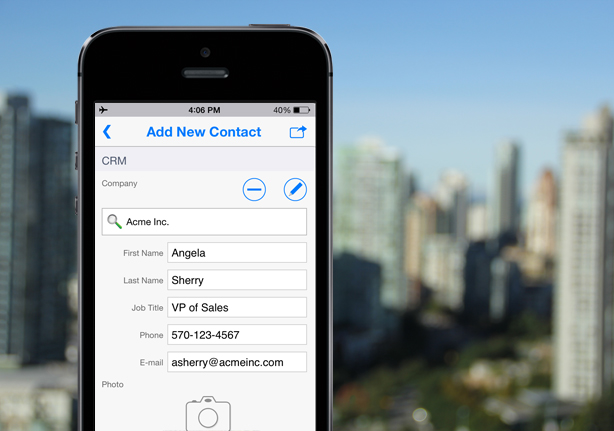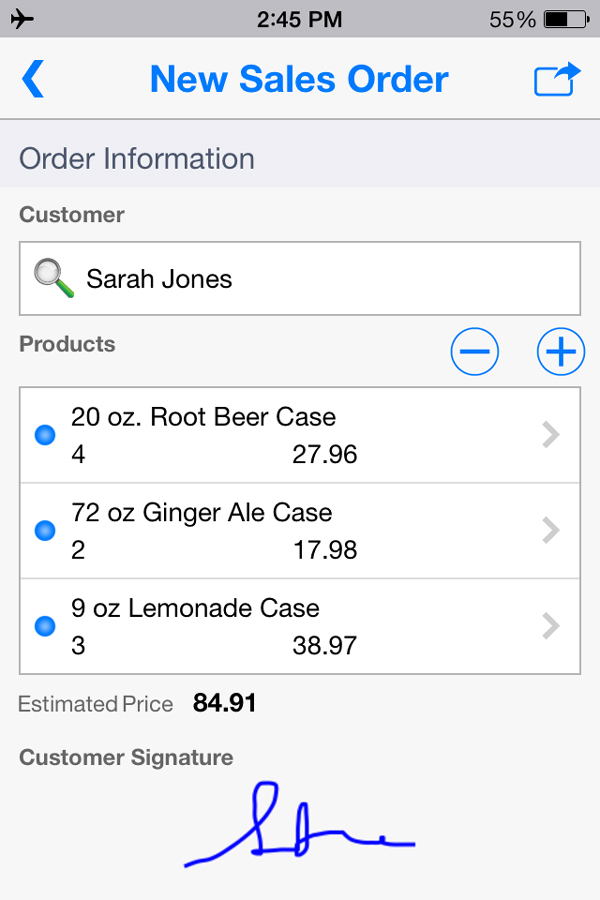What Are Nested Fields and Why Should You Care?
 Have you ever found yourself without network coverage and unable to carry out what should be simple business tasks on your smartphone? If you don't have an Internet connection, most mobile software systems are limited, even if they say they support ‘offline' use. Tasks as simple as entering new customers into a CRM system or creating sales orders with multiple items are often simply not possible when you're offline.
Have you ever found yourself without network coverage and unable to carry out what should be simple business tasks on your smartphone? If you don't have an Internet connection, most mobile software systems are limited, even if they say they support ‘offline' use. Tasks as simple as entering new customers into a CRM system or creating sales orders with multiple items are often simply not possible when you're offline.
Adding a new contact to a CRM system from a mobile device, for example, would require a server connection to look up or create a higher-level item such as a company. Then a sub-level of information, or a contact, could be added to it.
The same issue arises when creating a sales order. A server connection is typically needed to create a new order number before order items can be added.
The issue is that systems built on the basis of online operation have different data structures and user interfaces than those built for offline use from the ground up. This means that a lot of the potential productivity benefits that mobile systems can and should offer are lost due to limited offline functionality.
There are many simple data collection tools that work offline for capturing "flat" data in the field. But for real business process automation, the ability to look up or edit existing records, and add multi-level information is often required. And the ability to perform all of these tasks offline is critical.
 This
brings us to nested fields: variable items like lists, tables, or other
form elements that let you add multiple levels as you're filling in a mobile
form. For example, when taking a sales order from a customer, a nested list would let you add as many order items as you need to the form.
This
brings us to nested fields: variable items like lists, tables, or other
form elements that let you add multiple levels as you're filling in a mobile
form. For example, when taking a sales order from a customer, a nested list would let you add as many order items as you need to the form.
If you were collecting competitor information in a retail store, a nested table could be used to add or delete competitor products. Or, you could use a nested field to capture a list of parts used on a field service job. Without nested fields, these tasks are often impossible to complete if a network connection is unavailable.
Nested fields point to a fundamental difference between simple one-way data collection apps and solutions that go beyond data submission to support real-life business processes offline: master-detail data structures that support the app.
Flowfinity apps are fully database-driven to deliver practical, revenue-enhancing offline functionality. Simply capturing data in the field only solves part of the problem. Without nested structures, many everyday tasks and more complex transactions can't truly be automated on mobile devices, leading to productivity losses in the field or further down the line.
If you're considering an enterprise app solution, think about everything that you would like mobile employees to be able to do in the field; then consider if they might need to be able to do them when they don't have a good Internet connection. If the data structure is flat, and you don't have the ability to create records with multiple levels on mobile devices, you might find your users frustrated and unproductive in the field as they try to perform some of the simplest of tasks.